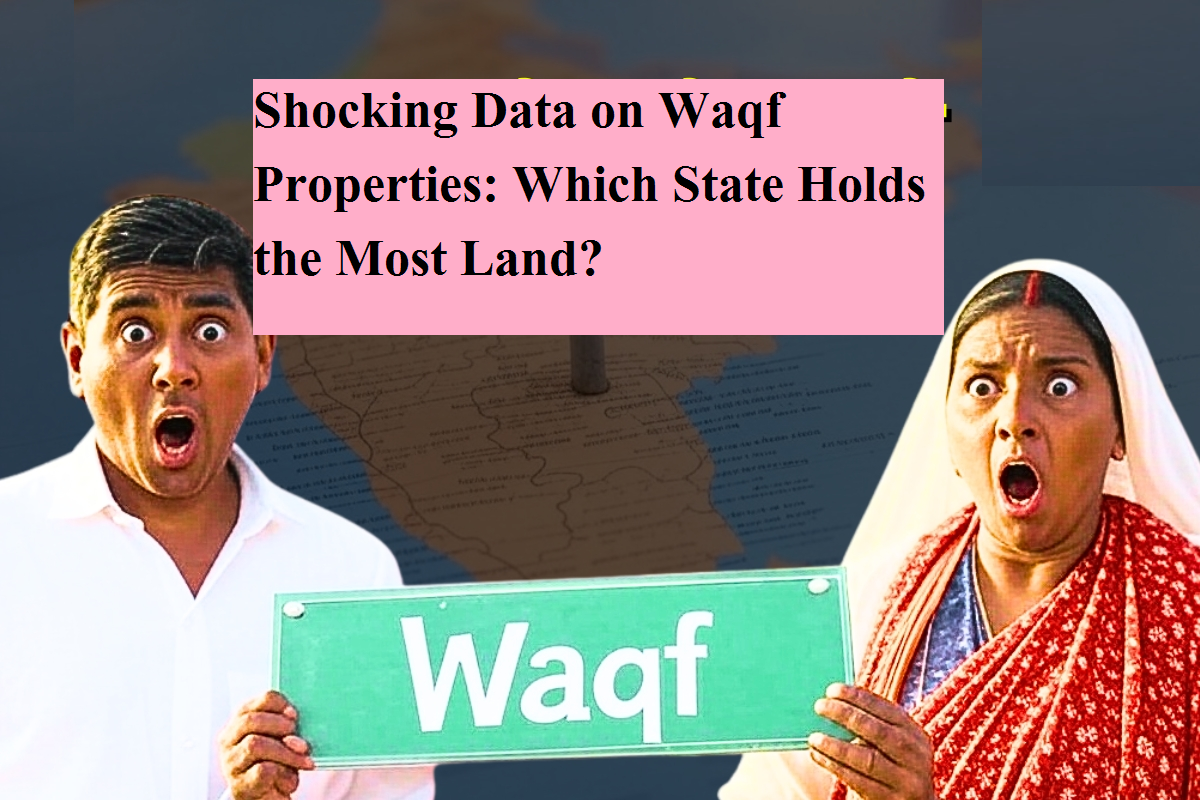
Waqf Property Update:
After clearing the Lok Sabha, the "Waqf Amendment Bill" has now been passed by the Rajya Sabha. This development has reignited public curiosity about the actual extent of Waqf properties across India and their estimated market value.
Waqf properties hold significant religious, social, and economic importance in India. Historically, Muslim communities have donated these lands for religious activities, mosques, cemeteries, madrasas, and other charitable purposes. Over time, however, issues of management, encroachments, and legal disputes have cast a shadow over these properties, turning them into a politically sensitive subject. Numerous cases involving encroachments, court battles, and government interventions highlight ongoing concerns about their usage and control.
How Much Waqf Land Exists in India?
According to official data, the Waqf Board currently owns around 9.4 lakh acres of land. When compared to other government bodies, the Ministry of Defence leads with 17.95 lakh acres, followed by the Indian Railways with nearly 12 lakh acres. This places Waqf properties as the third-largest landholding entity in the country.
Waqf Land Distribution Across States
Here's a breakdown of Waqf landholdings by state:
| State | Total Properties | Total Land (in Acres) |
|---|---|---|
| Karnataka | 62,830 | 596,516.61 |
| Madhya Pradesh | 33,472 | 679,072.39 |
| Tamil Nadu | 66,092 | 655,003.20 |
| Rajasthan | 30,895 | 509,725.57 |
| Jammu & Kashmir | 32,533 | 350,300.75 |
| Maharashtra | 36,701 | 201,105.17 |
| Bihar (Sunni Board) | 6,866 | 169,344.82 |
| Telangana | 45,682 | 143,305.89 |
| Gujarat | 39,940 | 86,438.95 |
| West Bengal | 80,480 | 82,011.84 |
The cumulative total stands at approximately 38 lakh acres across all states.
Interestingly, Uttar Pradesh has the highest number of properties recorded, especially under the Sunni and Shia Waqf Boards. However, specific land area data for Uttar Pradesh Sunni Waqf Board is currently unavailable.
Digitalization Efforts and Data Insights
In 2009, the UPA government launched the WAMSI Portal to digitize Waqf property records. This portal remains the primary database for immovable and movable Waqf assets.
Here are some key figures from the WAMSI Portal:
| Description | Figures |
|---|---|
| Total Immovable Properties | 8,72,805 |
| Movable Properties | 16,716 |
| Properties in 15 States | 97% of Total |
| Encroached Properties | 58,890 |
| Properties with Incomplete Information | 4,36,179 |
| Properties in Legal Disputes | 13,000 |
| Dispute-Free Properties | Only 39% |
How Are Waqf Properties Utilized?
Waqf properties are distributed across various uses:
- Cemeteries: Around 1.5 lakh
- Mosques: 1.19 lakh
- Imambaras / Ashurkhanas: 17,000
- Madrasas: 14,000
- Mausoleums and Dargahs: 34,000
- Commercial Properties: 1.13 lakh
- Residential Houses: 92,000
- Agricultural Land: Approximately 1.4 lakh
Notably, in Delhi, about 123 Waqf properties that had been taken over by the central government were later returned to the Waqf Board by the UPA administration — a move still under dispute.
Massive Growth in Waqf Land
Home Minister Amit Shah stated in 2024 that Waqf Board land holdings had expanded dramatically. He noted that between 1913 and 2013, Waqf properties accounted for 18 lakh acres. From 2013 to 2025, this number surged by an additional 21 lakh acres, bringing the total to 39 lakh acres.
However, Shah also pointed out a decline in the number of properties leased out: from 20,000 earlier to zero in 2025, suggesting that many such properties were sold off.






